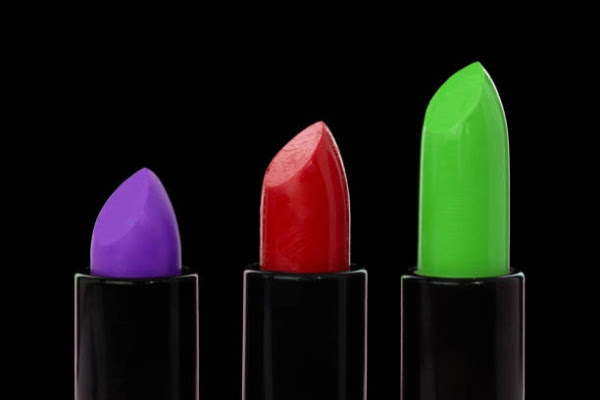Lipstick and Cultural Evolution
Adapting to Changing Beauty Ideals
Introduction:
Lipstick, as a symbol of beauty and self-expression, has
long been intertwined with cultural norms, societal ideals, and historical
trends. Throughout history, lipstick has adapted and evolved to reflect
changing beauty standards, cultural values, and societal shifts. In this
exploration, we delve into the dynamic relationship between lipstick and
cultural evolution, examining how this iconic cosmetic product has adapted to
diverse cultural contexts and evolving beauty ideals.
Historical Perspectives on Lipstick:
The history of lipstick spans thousands of years and
traverses diverse cultures and civilizations. From ancient Mesopotamia to
modern-day society, lipstick has played a significant role in shaping
perceptions of beauty, femininity, and status.
In ancient civilizations such as Mesopotamia, Egypt, and
Rome, lipstick was used as a symbol of social status, wealth, and beauty. Both
men and women adorned their lips with natural pigments derived from minerals,
plants, and insects, reflecting cultural norms and aesthetic preferences of the
time.
During the Middle Ages and Renaissance periods, lipstick
fell out of favor in Western society, associated with decadence and immorality.
However, it experienced a resurgence in popularity during the 20th century,
particularly with the advent of Hollywood glamour and the rise of beauty icons
such as Marilyn Monroe and Audrey Hepburn.
Cultural Influences on Lipstick Trends:
Cultural influences play a significant role in shaping
lipstick trends and beauty ideals around the world. Different cultures have
distinct preferences when it comes to lip color, texture, and application
techniques, reflecting diverse cultural values, traditions, and aesthetic
preferences.
For example, in Asian cultures, such as Japan and South
Korea, natural and understated lip colors are often favored, reflecting a
preference for youthful and fresh-faced beauty. Soft pink and peach tones are
popular choices, complementing the emphasis on flawless skin and minimalistic
makeup looks.
In contrast, in Western cultures, bold and vibrant lipstick
colors, such as reds and purples, are celebrated for their confidence and
allure. Red lipstick, in particular, has become a timeless symbol of glamour
and sophistication, embraced by women around the world as a statement of
empowerment and self-expression.
Evolving Beauty Ideals and Body Positivity:
As cultural attitudes towards beauty and body image continue
to evolve, so too do perceptions of lipstick and cosmetic products. The rise of
the body positivity movement and the celebration of diverse beauty ideals have
challenged traditional beauty standards and promoted inclusivity and
self-acceptance.
In recent years, there has been a shift towards more
inclusive beauty campaigns and marketing strategies that celebrate diversity
and authenticity. Beauty brands are increasingly featuring models of different
ages, sizes, ethnicities, and gender identities in their advertising campaigns,
reflecting the diversity of their consumer base and promoting a more inclusive
definition of beauty.
Moreover, the beauty industry has witnessed a growing demand
for products that cater to diverse skin tones and undertones, including
lipstick shades that complement a wide range of complexions. Beauty brands are
expanding their shade ranges and investing in shade-matching technologies to
ensure that their products are accessible and inclusive for all consumers.
Lipstick as a Form of Self-Expression:
Lipstick serves as a powerful form of self-expression,
allowing individuals to assert their identity, creativity, and personal style.
Whether it's a bold red lip for a night out or a nude lip for everyday wear,
lipstick has the ability to convey mood, personality, and confidence.
In the age of social media and digital communication,
lipstick has become a tool for self-expression and storytelling. Beauty
influencers and content creators use platforms such as Instagram, TikTok, and
YouTube to share makeup tutorials, lip swatches, and product reviews, inspiring
others to experiment with different lipstick shades and looks.
Moreover, lipstick has the power to evoke nostalgia and
cultural memories, serving as a connection to the past and a symbol of shared
experiences. Certain lipstick shades may evoke memories of a favorite childhood
toy or a beloved movie character, tapping into the emotional resonance of
beauty and nostalgia.
Conclusion:
Lipstick, as a cultural artifact, has evolved alongside
changing beauty ideals, societal norms, and cultural values. From ancient
civilizations to modern-day society, lipstick has adapted to diverse cultural
contexts, reflecting shifting attitudes towards beauty, identity, and
self-expression.
As cultural attitudes towards beauty continue to evolve,
lipstick remains a timeless symbol of empowerment, creativity, and
individuality. Whether it's embracing bold and vibrant colors or celebrating
natural and understated beauty, lipstick serves as a canvas for self-expression
and a reflection of cultural values and ideals.
In the future, lipstick will continue to evolve and adapt to
changing cultural landscapes, embracing inclusivity, diversity, and
authenticity. As beauty ideals continue to diversify and expand, lipstick will
remain a universal symbol of beauty, confidence, and self-expression for
generations to come.
